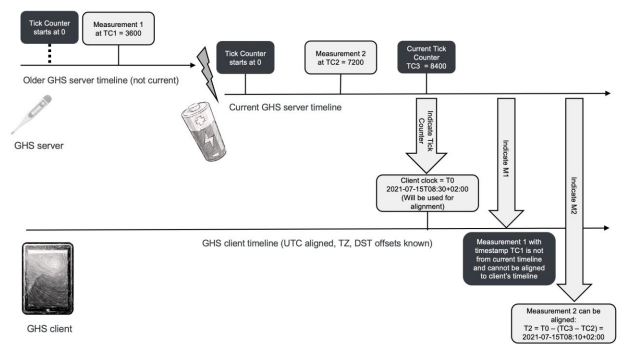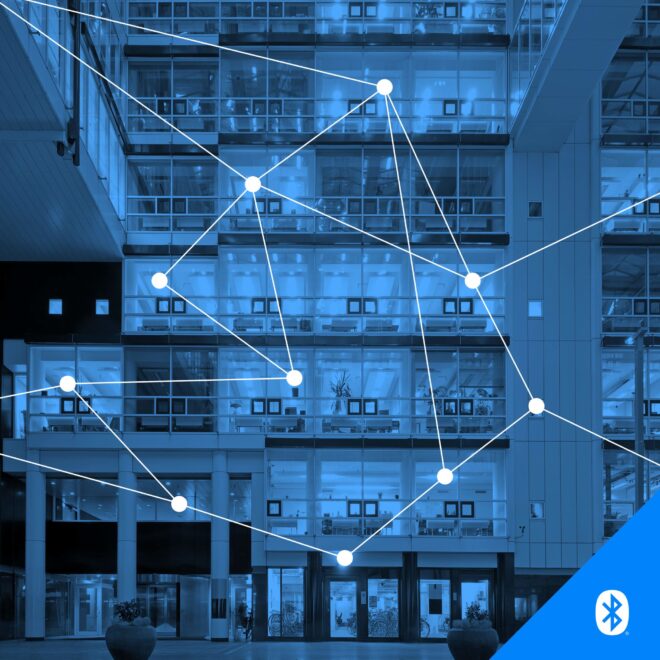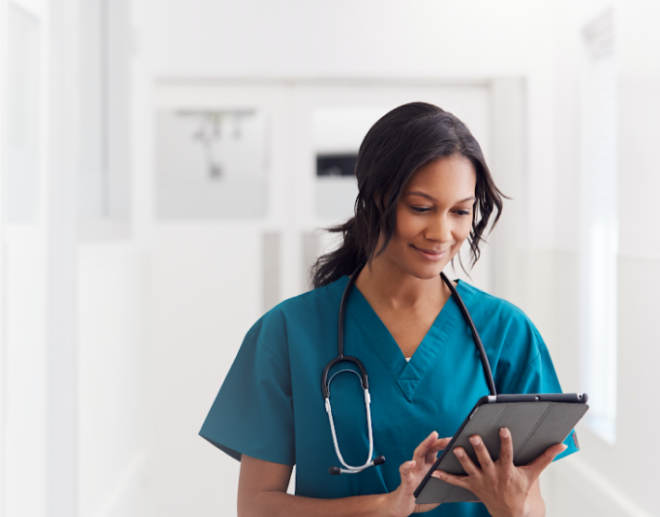As COVID-19 continues to have a major impact around the world, governments and commercial organizations are turning to Bluetooth® technology to help protect the safety of the public and workforces across many different environments. In addition to being used for regional exposure notification and testing systems that help companies develop safe-return strategies, Bluetooth enabled solutions can generate additional efficiencies and ROI to help businesses thrive post COVID-19.

Enabling a Safe Return to Work
As explained in a new Bluetooth® market research note on How Bluetooth technology is Enabling Safe-Return Strategies in a COVID-19 Era, Bluetooth enabled devices are already being leveraged extensively in attempts to help reduce the spread of coronavirus. Thanks to the ubiquitous presence of Bluetooth technology in smartphones, governments around the world are relying on Bluetooth connectivity to support public exposure notification systems capable of informing users when they have been in close proximity to someone who was later diagnosed with COVID-19.
In the UK, for example, the National Health Service (NHS) contact-tracing app has been downloaded nearly 20 million times in the first two months of launch. Similar solutions have been launched in many countries, and it is clear that exposure notification systems will be an important part of the safe return and reopening of numerous environments, including schools, retail locations, office buildings, public venues, and more.
Recent months have seen an explosion in the availability of Bluetooth solutions supporting COVID-19 responses; RTLS (real-time location system), smart building, and other IoT solution providers have adapted existing or created new products that help organizations leverage location data and analytics to reopen safely. These solutions range from shorter-term rollouts that require no additional infrastructure to longer-term RTLS deployments that can support higher accuracy location services and additional operational improvements that help make up for production losses caused by COVID-19 shutdowns.
While Bluetooth technology is playing an important role on the road to recovery, Bluetooth enabled solutions can also generate additional efficiencies and ROI to help businesses thrive in the post-COVID-19 world.
By 2025, ABI Research anticipates over 300 million RTLS tags will be shipping annually, addressing asset tracking, personnel tracking, vehicle tracking, and tool and equipment tracking, among other use cases.
New Opportunities for Smart Buildings
The market research note also identifies that as people prepare to return to workspaces, there is increasing demand to equip commercial environments with connected devices that continuously monitor building assets to ensure the health, safety, and security of the occupants while emphasizing efficient use of building resources. This demand is powering momentum behind the next generation of managed building automation system (BAS) solutions, such as space management, environmental monitoring, cleanliness and hygiene management, and asset management. These new applications will be predominantly enabled by wireless, sensor-based devices that can operate as standalone applications or integrate with a traditional BAS.
As Bluetooth® Low Energy (LE) functionality and location services are increasingly incorporated within access points, deployments will become more commonplace. There is a strong need for more plug-and-play solutions that can easily be deployed out of the box without the requirement of extensive cabling, configuration, and surveying. ABI Research anticipates Bluetooth integration within enterprise access points to achieve a 14 percent CAGR between 2020 and 2025 as the value of location services technologies becomes widely acknowledged.
And, though many operations may initially opt for infrastructure-free solutions, according to ABI Research, planning an effective RTLS strategy will provide much greater value in the long run and allow enterprises to maximize their return on investment while delivering operational efficiencies that help them remain competitive post COVID-19.
ABI Research anticipates Bluetooth® integration within enterprise access points to achieve a 14 percent CAGR between 2020 and 2025 as the value of location services technologies becomes widely acknowledged.
Futureproofing Beyond COVID-19
COVID-19 put the need for process improvement at the forefront of future planning and is likely to increase the understanding of RTLS as it relates to the wider business impact. As such, there is a growing awareness that RTLS solutions can provide more value than simple location data.
While solutions are emerging that target COVID-19-related applications, there is benefit in developing an overall RTLS and smart building strategy that can leverage location insights using Bluetooth® technology to provide COVID-19-related and other, wider use cases in a holistic manner. These solutions also open the possibility for valuable use cases to be added over time that expands into other business areas and help drive efficiency improvements.
To learn more, check out the latest Bluetooth market research note, How Bluetooth technology is Enabling Safe-Return Strategies in a COVID-19 Era.
![]()
FEATURED DOWNLOAD
How Bluetooth Technology is Enabling Safe-Return Strategies in a COVID-19 Era
This report shares analyst’s insights into how Bluetooth® technology is being leveraged to help protect the safety of the public and workforces across many different environments.




























